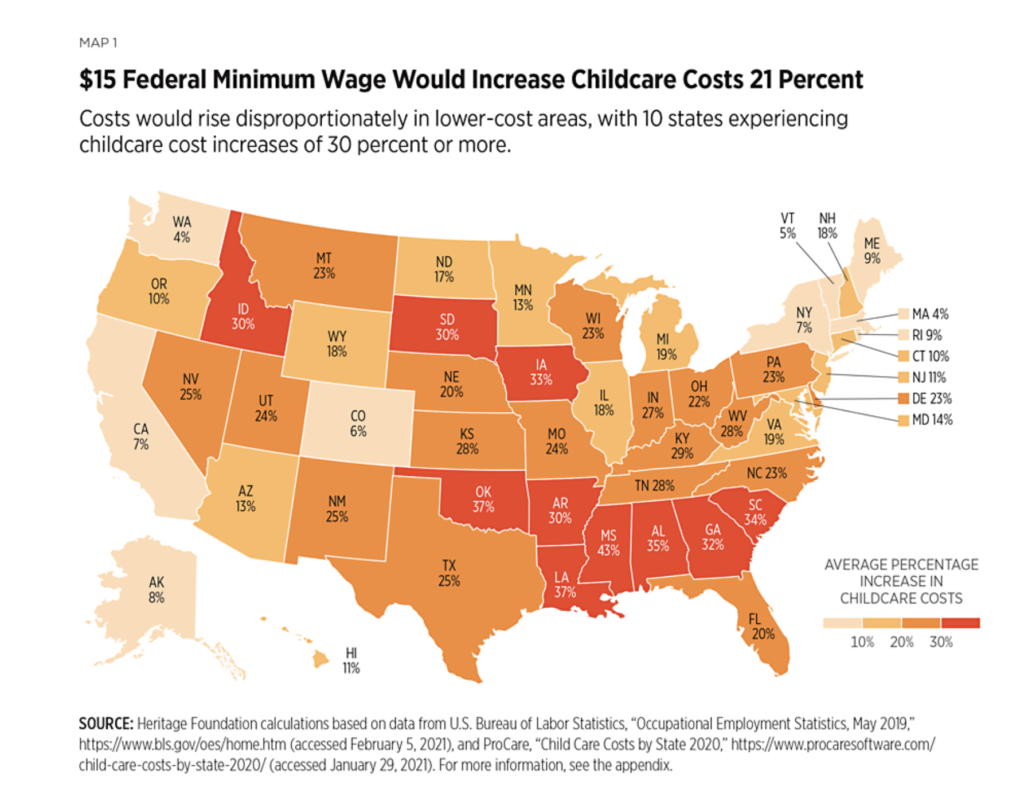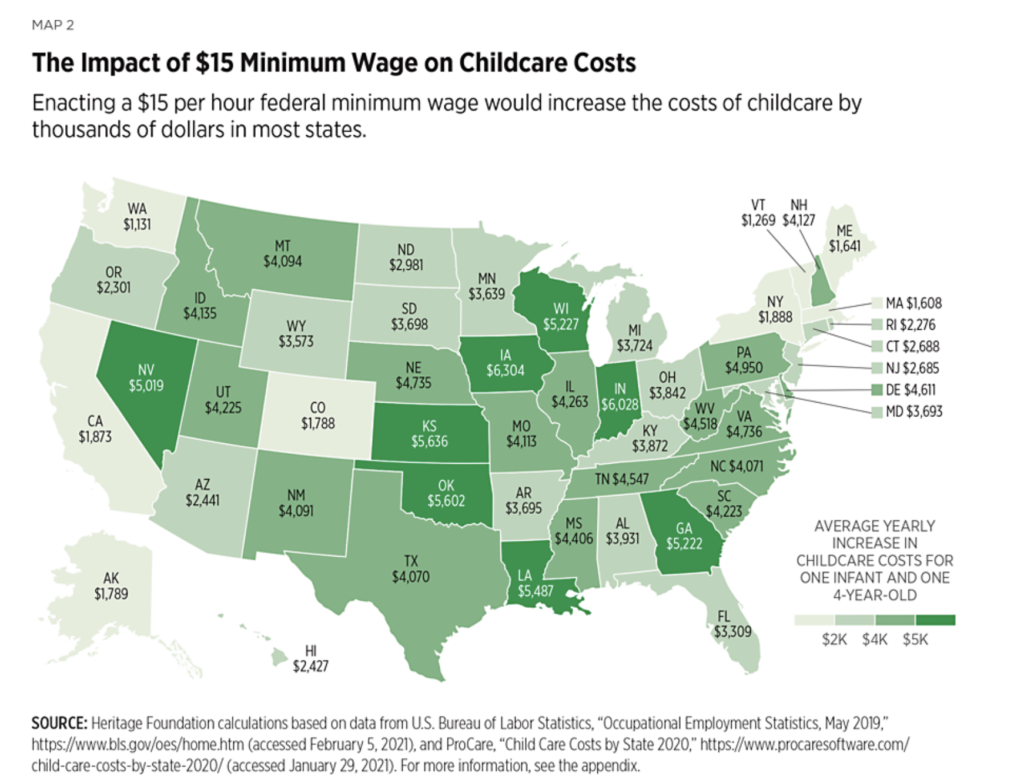Minnesota Child Care Costs Rise 13% with a $15 Minimum Wage
One of the biggest unintended consequences of requiring higher wages is higher prices. Businesses usually seek out ways to cushion themselves from higher labor costs. One of the ways they do this is by passing on higher labor costs to consumers through higher prices — a certain consequence with Minnesota child care.
This is why sometimes higher nominal wages may translate to unchanged or even lower real wages after accounting for price changes. One study, for instance, found that McDonald’s passed through to customers 100 percent of its wage increase after a minimum wage hike. This essentially translated to unchanged real wages for workers after accounting for inflation.
Apart from passing through costs to consumers, businesses can also change their behavior in the labor market. Fast food restaurants, can, for instance, get rid of workers and instead use order kiosks. Additionally, businesses can also cut hours for their workers. Target, for example, cut its workers’ hours after raising its minimum wage to $15. Businesses can also cut employment, or reduce the hiring of new employees in the future.
Minnesota child care costs will be significantly affected
Child care workers are generally among some of the lowest-paid workers in the nation. The Center for the Study of Childcare Employment estimates that on average, child care workers are paid $12.12 an hour. This, therefore, makes a $15 minimum wage binding in the child care industry, and very likely to significantly impact Minnesota child care prices.
Unfortunately, unlike other businesses in the service sector, the child care industry faces a worse fate. For one, child care costs are already too high in the nation. And additionally, the nature of child care offers providers little room to automate or reduce labor demand. Kids need to be taken care of by human workers, making child care extremely labor-intensive.
This means that the only way providers can respond to higher labor costs is by passing on higher labor costs to parents through higher prices. In addition, there is very little, if anything, that can be done to improve the productivity of child care workers. Furthermore, most states impose regulations on providers that make them unable to reduce operating costs.
Taking all these factors into account, a new study by The Heritage Foundation has estimated that Minnesota child care costs would increase by 13 percent if the minimum wage goes up to $15. Nationally, costs will increase by 21 percent on average, and impacts will vary by state. Lower-cost states will see their costs increase the most as they have a much lower starting wage.

Parents will pay thousands more
In dollar terms, a 13-percent rise in Minnesota child care costs translates to an increase of about $3,600. Compared to other states, Minnesota’s costs will go up by less than the national average — “$3,728 per year in child care costs for a family with two children.” However, Minnesota is already one of the most expensive states for child care. Additionally, Minnesota has had one of the fastest growth rates in child care costs due to the pandemic.

Minnesota’s high child care costs are a big issue facing parents. And raising child care prices further has the potential to drive even more families out of the child care market. Consequentially, this “would force some parents to give up their jobs and live on lower household incomes, while causing others — particularly single parents — to turn to non-licensed, typically illegal, child care.” All of this is harmful to the wellbeing and development of kids, as well as Minnesota’s economy.